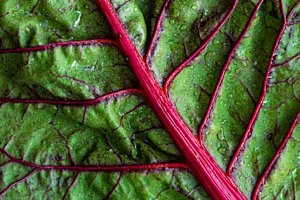
Alzheimer's disease, Parkinson's disease and mild cognitive impairment are all associated with brain ageing, and the causes are different. In new studies, researchers reveal one common factor in their formation - high levels of homocysteine in the blood. Excessive homocysteine has long been associated with poor cardiovascular health. More than 38 years ago, it was discovered that homocysteine is harmful to the endothelium and impairs its ability to respond to changes in blood flow and pressure.
Homocysteine is produced as a by-product of consuming the amino acid methionine. Those who eat a lot of red meat often have higher levels of homocysteine in their blood because red meat contains methionine. Homocysteine is detoxified in the body by two independent pathways: (1) methylation (dependent on folic acid, vitamin B12 and B2) and (2) transsulphuration (dependent on vitamin B6). Young people readily convert B vitamins into the active form, which readily metabolises homocysteine. However, as we age, the enzymes needed to convert B vitamins into their active form decline. This is one of the reasons why people who had low homocysteine in their youth notice increased/high blood levels of homocysteine as they get older.
Homocysteine and degenerative brain ageing
The link between high blood levels of homocysteine and an increased risk of Alzheimer's disease (AD) and vascular dementia was established 20 years ago. Since then, clinical studies have continued to show that homocysteine contributes to degenerative brain ageing. In 2018, a group of experts published an international consensus based on two decades of data that elevated homocysteine is a modifiable risk factor for the development of congenital decline, dementia and Alzheimer's disease in older people; published in the scientific journal Journal of Alzheimer's Disease. New studies published in 2019 have confirmed that elevated homocysteine levels in AB patients correlate with the degree of cognitive impairment. Higher homocysteine is associated with delusions, agitation/attractiveness, and depression. In Parkinson's disease patients with the highest homocysteine levels, poor blood flow in altered areas of the brain has been documented.
How homocysteine accelerates brain ageing
Homocysteine damages the brain through: chronic inflammatory reactions, formation, atherosclerotic plaques that impede blood flow, shrinkage of brain areas such as the hippocampus that are involved in memory formation, development of neurofibrillary tangles and beta amyloid plaques that trigger cell death, and interference with the normal DNA repair needed to maintain brain cells.
Nutrients that lower homocysteine
Homocysteine is easily measured with a blood test. If it is elevated, it can be lowered by taking several active forms of B vitamins, i.e. the active form of folic acid (5-MTHF), vitamin B6 (pyridoxal-5' phosphate) and the neurologically active form of B12, called methylcobalamin. These forms of B vitamins do not require enzymes for conversion in the body and are readily available for homocysteine detoxification. Experts recommend blood levels of homocysteine below 12 µmol/l, ideally below 8 µmol/l. Increased homocysteine is associated with a 4.2 to 10.5-fold increased risk of vascular dementia.
B vitamins in active forms can establish a more youthful detoxification of homocysteine via the methylation and transsulphuration pathways in the body. The ideal combination of B vitamins "switches on" both pathways of homocysteine removal. Measure homocysteine in your blood for optimal protection against excessive levels.





